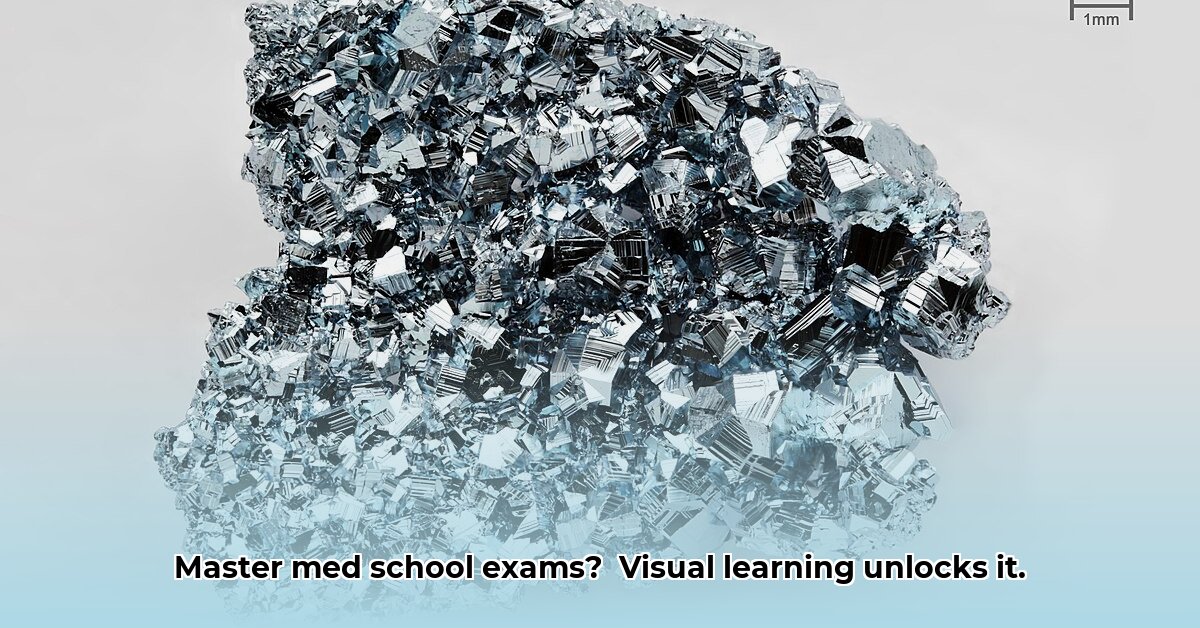
Medical school: a marathon of intense learning and high-stakes exams. Feeling overwhelmed? Osmosis, a visual learning platform, offers a potential solution. This isn't just a product review; it's an in-depth look at how Osmosis can transform your medical education, based on user experiences and objective analysis.
Visual Learning: A Revolution in Medical Education
Traditional medical textbooks can feel dense and overwhelming. Osmosis tackles this by using short, engaging videos to break down complex medical concepts. These aren't dry lectures; they're dynamic presentations designed for optimal comprehension and retention. Imagine learning complex physiological processes as if a knowledgeable friend were explaining them—that's the Osmosis approach. Isn't that a more appealing way to learn complex medical topics?
How Osmosis Works: A Multi-Modal Approach
Osmosis isn't just videos; it's a comprehensive learning ecosystem. The platform recognizes diverse learning styles and offers a buffet of tools:
- Engaging Videos: Short, focused videos that break down complex subjects into easily digestible chunks.
- Interactive Flashcards: Leveraging spaced repetition (a scientifically proven method for improved long-term retention), these flashcards ensure you review information at optimal intervals.
- Regular Quizzes: Regular assessments to monitor your understanding, highlighting areas needing further attention.
- Diagnostic and Management Templates (DMTs): Practice your clinical reasoning skills—crucial for future medical practice—by simulating real patient scenarios.
This multi-modal approach transforms passive learning into active engagement, maximizing knowledge retention and genuine understanding.
Is Osmosis Right for You? A Personalized Assessment
Osmosis caters to a wide range of healthcare students, including medical, nursing, and physician assistant students. However, its suitability depends on your individual learning style.
The Good and the Not-So-Good: A Balanced Perspective
| Feature | Pros | Cons |
|---|---|---|
| Learning Style | Adaptable; caters to visual, auditory, and kinesthetic learners; interactive and fun! | May not be perfect for every learning style; some might prefer traditional books. |
| Content Quality | High-quality, peer-reviewed material that's frequently updated. | Primarily focuses on the US curriculum; international applicability is limited. |
| User Experience | Clean interface, easy navigation, works flawlessly on mobile devices. | Subscription-based; the cost may be a factor for some students. |
| Effectiveness | Many students report improved exam scores and reduced test anxiety. | More large-scale, quantitative studies are needed to firmly establish its effectiveness. |
Real-Life Stories: Student Testimonials
"Osmosis helped me visualize those complicated physiological processes. Suddenly, the stuff that used to confuse me became crystal clear!" – Sarah, Medical Student, University of California, San Francisco
"I used Osmosis to supplement my lectures and it was a game-changer. The concise videos and quizzes helped cement what I learned in class." – John, PA Student, Duke University
These testimonials highlight Osmosis's ability to transform complex medical knowledge into something easily understood and remembered. Does this resonate with your learning experience?
Beyond the Videos: Additional Features
Osmosis offers more than visually appealing videos:
- Detailed Flashcards: Reinforce learning through spaced repetition, improving long-term recall. Have you experienced the benefits of spaced repetition? It's highly effective!
- Practice Questions: Identify knowledge gaps and focus your studies accordingly.
These tools work synergistically, creating a comprehensive study system. The spaced-repetition element is particularly valuable.
The Future of Osmosis: Growth and Ongoing Development
While Osmosis shows substantial promise, ongoing challenges remain. Maintaining up-to-date content, expanding internationally, and conducting further research to quantify its impact are key areas for growth. However, its positive user feedback and expanding user base indicate a bright future. What do you think are the next steps for Osmosis?
How to Use Osmosis for USMLE Step 1 Preparation
The USMLE Step 1 exam, while now pass/fail, still demands a strong foundation. Osmosis serves as a powerful complement to other resources (not a replacement). Its strength lies in visually engaging explanations that enhance long-term retention.
Integrating Osmosis into Your USMLE Step 1 Study Plan
- Foundation Building: Use Osmosis to solidify foundational science concepts. Watch videos, take notes, and utilize active recall features.
- Targeted Learning: Focus on your weak areas using Osmosis’s targeted content selection.
- Spaced Repetition: Leverage Osmosis’s spaced repetition algorithms for enhanced long-term recall.
- Active Recall: Actively test your knowledge using quizzes and practice questions.
- Supplement, Don't Replace: Integrate Osmosis with traditional study methods (e.g., First Aid, UWorld).
Osmosis vs. Traditional Methods
| Feature | Osmosis | Traditional Methods (e.g., Textbooks) |
|---|---|---|
| Learning Style | Visual, video-based | Primarily text-based |
| Knowledge Retention | Enhanced through spaced repetition | Requires more active effort for retention |
| Engagement | Highly engaging, interactive | Can be less engaging |
| Cost | Subscription-based | Varies widely |
| Accessibility | Available online, mobile-friendly | Less accessible, often require physical books |
Maximizing Osmosis's Effectiveness
- Structured Study Schedule: Integrate Osmosis strategically into your study plan.
- Active Note-Taking: Don't just watch; actively summarize key concepts and clinical relevance.
- Regular Review: Consistent review is crucial for long-term retention.
- Community Engagement: Interact with other users to enhance understanding.
Success on the USMLE Step 1 hinges on consistent effort, targeted learning strategies, and judicious use of resources like Osmosis. It is a powerful tool, but effective use requires a well-structured study plan.